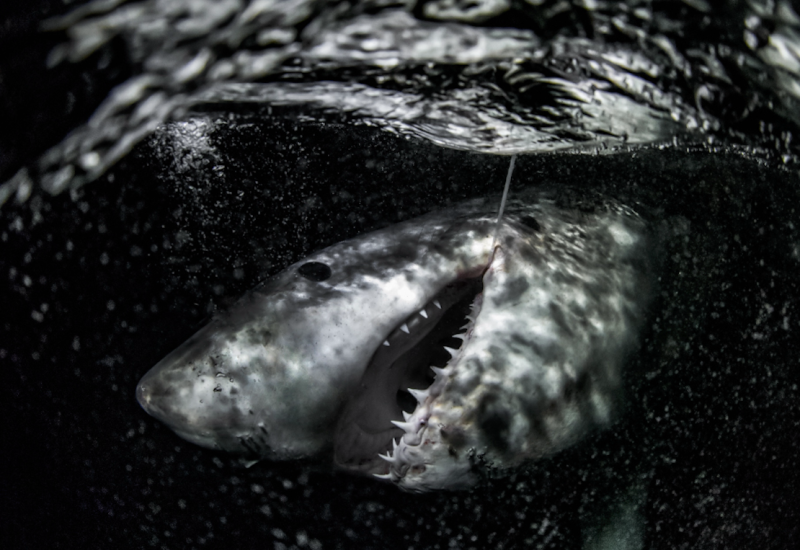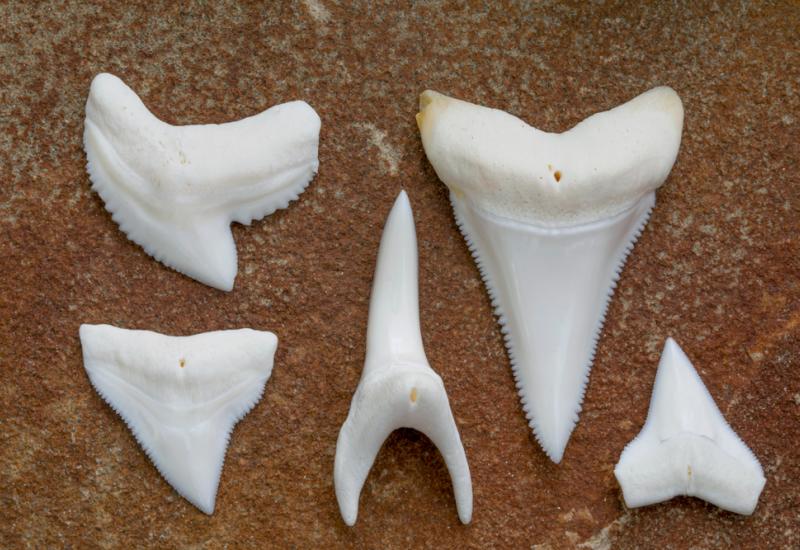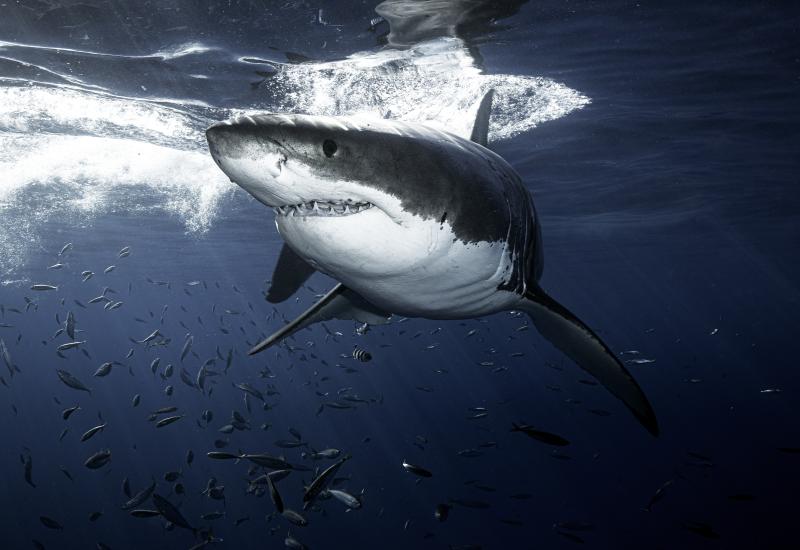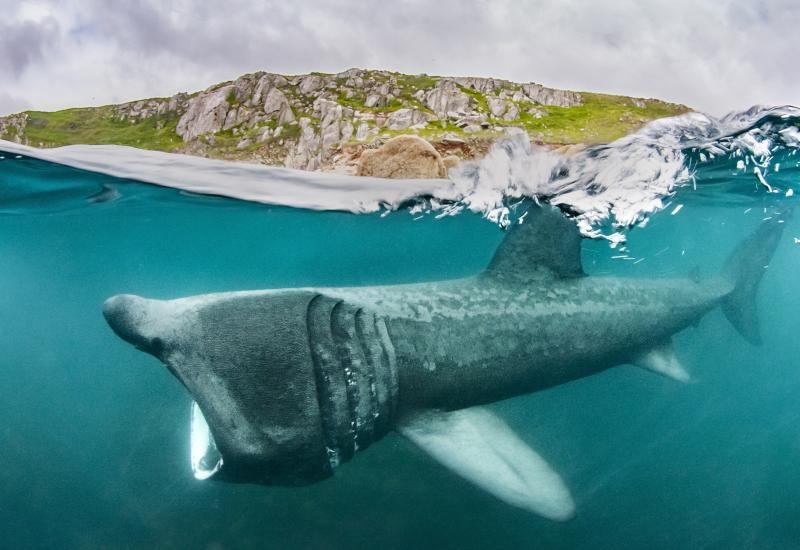What It's Like To Be A Shark Week Videographer

Andy Brandy Casagrande
Shark Week videographer Andy Brandy Casagrande IV stands with his camera rig.
Jeremy Simons/Northern Pictures
This particular film started with the working title Sharks of Darkness. We are in New Zealand, near a seal colony, where we aren’t witnessing daytime predation from the great whites we’re there to film. But they must feed on seals, so we figure we’ll investigate. During the day, we familiarize ourselves with the area. I’m surprised how amped up — how untamed and wild — these sharks are. It’s not at all like Isla Guadalupe, Mexico, where the animals know the drill. Here, it’s all new. Curious, the great whites use their mouths to explore — which, for filming, is amazing.
Nightfall can’t come soon enough. We’re ready for the underwater cage, which differs from usual ones in that its sides have wide openings with no bars, necessary for my 50-pound Epic Red Dragon camera, which requires wide clearance.
Once inside, we’re lowered 70 feet into total darkness. I flip on my camera lights and immediately a shark swims toward my camera, crashing into it.
It’s so close, I can’t focus or train my lights on it. Then a second and a third come charging in, all forcing their way into the cage at once.
I start thinking, They must be attracted to the light. Or, perhaps because it’s night, they’re in hunting mode.
Either way, it’s not looking good and I’m not feeling all that comfortable. In darkness, we resemble seals, thanks to black wet- suits, and I’m wondering if this was a good idea. How am I going to reach the surface? When I work in a cage, I don’t wear fins. They’re strapped to the side, where, right now, a shark is chomping on aluminum.
At least half a dozen white sharks surround the cage, and a couple are still pushing their way inside. I can’t help but picture one stuck in between the bars. It would only turn more aggressive. Violent.
I can’t slow my racing heartbeat. I look at my gauges. I’m almost out of air. I’ve never been so freaked out inside a cage, let alone outside.
It’s time. I remember the communication system linking me to the surface, and I yell to the director to hoist us out of here. That was easily the most afraid I’ve ever been. Apparently, viewers felt the same way, and they liked it. The show, renamed Lair of the Mega Shark, rated so well that we just filmed a part two.
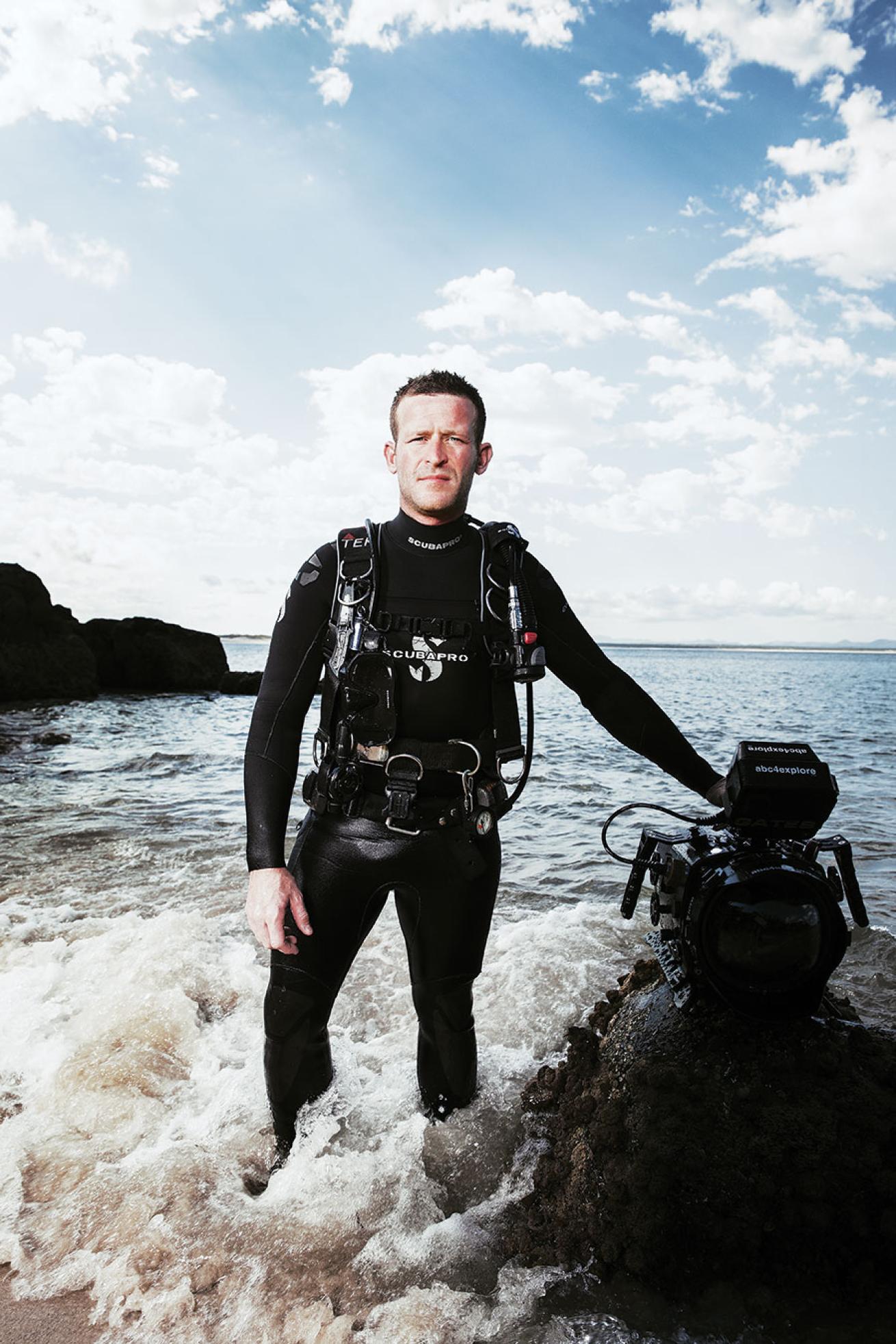
Jeremy Simons/Northern PicturesAndy Brandy Casagrande
Shark Week videographer Andy Brandy Casagrande IV stands with his camera rig.
This particular film started with the working title Sharks of Darkness. We are in New Zealand, near a seal colony, where we aren’t witnessing daytime predation from the great whites we’re there to film. But they must feed on seals, so we figure we’ll investigate. During the day, we familiarize ourselves with the area. I’m surprised how amped up — how untamed and wild — these sharks are. It’s not at all like Isla Guadalupe, Mexico, where the animals know the drill. Here, it’s all new. Curious, the great whites use their mouths to explore — which, for filming, is amazing.
Nightfall can’t come soon enough. We’re ready for the underwater cage, which differs from usual ones in that its sides have wide openings with no bars, necessary for my 50-pound Epic Red Dragon camera, which requires wide clearance.
Once inside, we’re lowered 70 feet into total darkness. I flip on my camera lights and immediately a shark swims toward my camera, crashing into it.
It’s so close, I can’t focus or train my lights on it. Then a second and a third come charging in, all forcing their way into the cage at once.
I start thinking, They must be attracted to the light. Or, perhaps because it’s night, they’re in hunting mode.
Either way, it’s not looking good and I’m not feeling all that comfortable. In darkness, we resemble seals, thanks to black wet- suits, and I’m wondering if this was a good idea. How am I going to reach the surface? When I work in a cage, I don’t wear fins. They’re strapped to the side, where, right now, a shark is chomping on aluminum.
At least half a dozen white sharks surround the cage, and a couple are still pushing their way inside. I can’t help but picture one stuck in between the bars. It would only turn more aggressive. Violent. I can’t slow my racing heartbeat. I look at my gauges. I’m almost out of air. I’ve never been so freaked out inside a cage, let alone outside.
It’s time. I remember the communication system linking me to the surface, and I yell to the director to hoist us out of here. That was easily the most afraid I’ve ever been. Apparently, viewers felt the same way, and they liked it. The show, renamed Lair of the Mega Shark, rated so well that we just filmed a part two.

